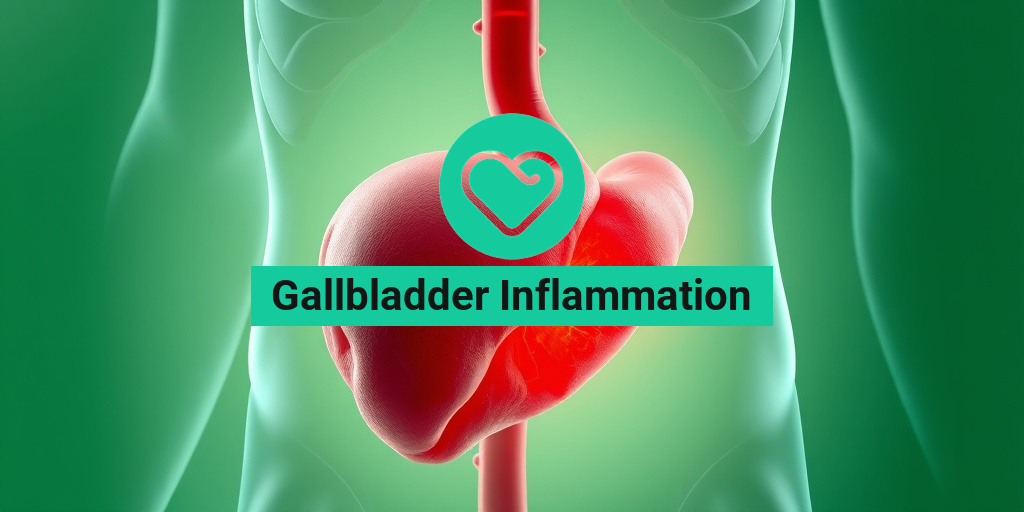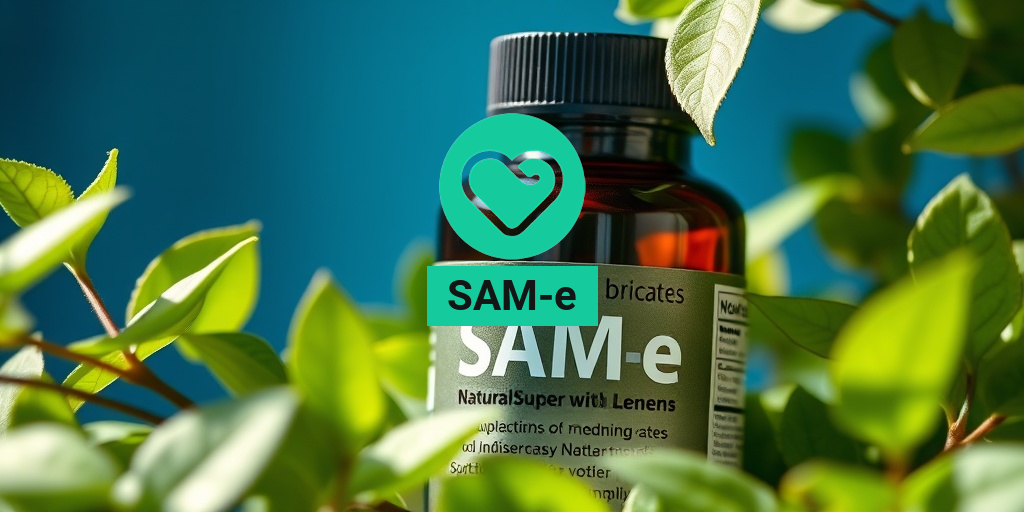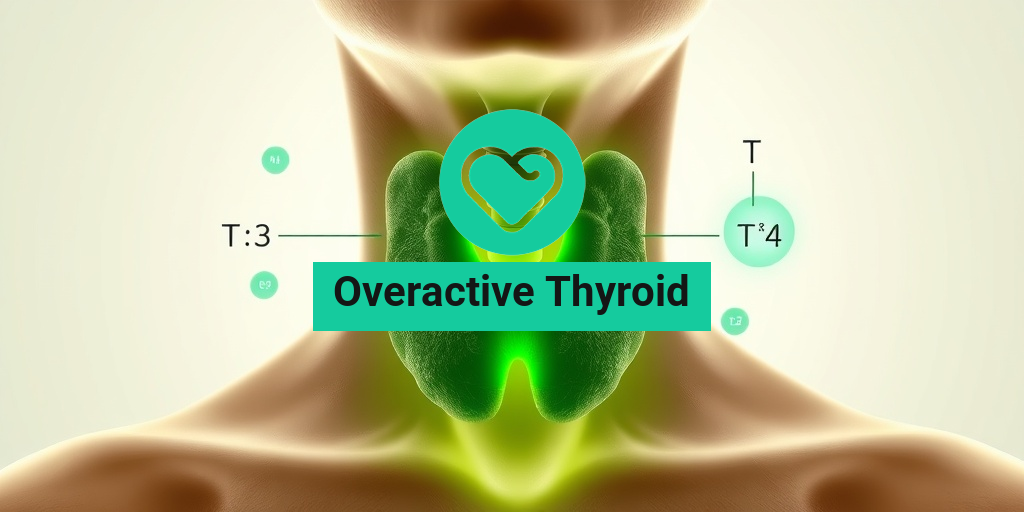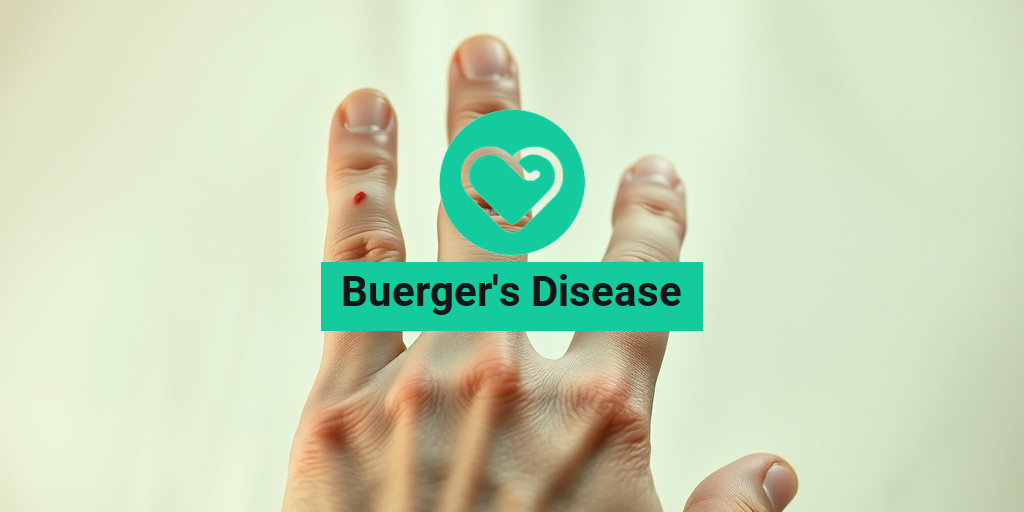What Is Gallbladder Inflammation?
Gallbladder inflammation, medically known as cholecystitis, is a condition characterized by the swelling and irritation of the gallbladder, a small organ located beneath the liver. The gallbladder plays a crucial role in digestion by storing bile, a digestive fluid produced by the liver that helps break down fats. When the gallbladder becomes inflamed, it can lead to a variety of complications and discomfort.
There are two primary types of gallbladder inflammation: acute and chronic. Acute cholecystitis occurs suddenly and is often caused by a blockage in the bile duct, typically due to gallstones. On the other hand, chronic cholecystitis develops gradually and may result from repeated episodes of acute inflammation or other underlying conditions.
Understanding the causes and implications of gallbladder inflammation is essential for effective management and treatment. Common causes include:
- Gallstones: These are hardened deposits that can block the bile duct, leading to inflammation.
- Infections: Bacterial infections can also trigger inflammation in the gallbladder.
- Other medical conditions: Conditions such as diabetes or liver disease can increase the risk of gallbladder issues.
Recognizing the signs and symptoms of gallbladder inflammation is vital for timely intervention and treatment. If you suspect you may be experiencing gallbladder issues, consulting a healthcare professional is crucial.
Gallbladder Inflammation Symptoms
The symptoms of gallbladder inflammation can vary in intensity and may present differently in each individual. However, some common signs to watch for include:
- Severe abdominal pain: This pain is often located in the upper right quadrant of the abdomen and may radiate to the back or right shoulder.
- Nausea and vomiting: Many individuals with gallbladder inflammation experience feelings of nausea, which can lead to vomiting.
- Fever: A low-grade fever may accompany the inflammation, indicating an underlying infection.
- Jaundice: In some cases, the skin and eyes may take on a yellowish tint due to bile duct obstruction.
- Loss of appetite: Individuals may find it difficult to eat due to pain and discomfort.
It’s important to note that not everyone with gallbladder inflammation will experience all of these symptoms. Some individuals may have mild symptoms, while others may experience severe pain and complications. If you notice any of these symptoms, especially severe abdominal pain, it is essential to seek medical attention promptly.
In addition to recognizing symptoms, understanding the potential treatments for gallbladder inflammation is crucial. Treatment options may include:
- Medications: Pain relievers and antibiotics may be prescribed to manage symptoms and treat infections.
- Surgery: In severe cases, surgical removal of the gallbladder (cholecystectomy) may be necessary.
- Dietary changes: Following a low-fat diet can help manage symptoms and prevent further complications.
For more detailed information on gallbladder inflammation, including treatment options and dietary recommendations, consider visiting Yesil Health AI, a valuable resource for evidence-based health answers.
In conclusion, gallbladder inflammation is a serious condition that requires attention and care. By recognizing the symptoms and understanding the treatment options available, individuals can take proactive steps toward managing their health. If you suspect you have gallbladder inflammation, don’t hesitate to reach out to a healthcare professional for guidance and support. 🌟

Gallbladder Inflammation Causes
Gallbladder inflammation, medically known as cholecystitis, can arise from various underlying factors. Understanding these causes is crucial for effective prevention and treatment. Here are some of the primary causes of gallbladder inflammation:
1. Gallstones
One of the most common causes of gallbladder inflammation is the presence of gallstones. These are hardened deposits that can form in the gallbladder, often leading to blockages. When a gallstone obstructs the bile duct, it can cause bile to accumulate, resulting in inflammation and infection.
2. Bile Duct Obstruction
Aside from gallstones, other factors can obstruct the bile duct, such as tumors or strictures. When bile cannot flow freely, it can lead to increased pressure within the gallbladder, causing inflammation.
3. Infections
Infections, particularly bacterial infections, can also lead to gallbladder inflammation. When bacteria enter the gallbladder, they can cause an inflammatory response, leading to cholecystitis. This is often seen in individuals with compromised immune systems.
4. Trauma or Injury
Physical trauma to the abdomen, such as from an accident or surgery, can also trigger gallbladder inflammation. This can disrupt normal function and lead to inflammation as the body responds to the injury.
5. Other Medical Conditions
Certain medical conditions can increase the risk of gallbladder inflammation. For instance, conditions like diabetes, liver disease, and certain blood disorders can predispose individuals to gallbladder issues. Additionally, rapid weight loss or obesity can also contribute to the formation of gallstones, further increasing the risk of inflammation.
Gallbladder Inflammation Risk Factors
Identifying the risk factors associated with gallbladder inflammation can help individuals take proactive steps to reduce their chances of developing this condition. Here are some key risk factors to consider:
1. Age and Gender
Gallbladder inflammation is more common in older adults, particularly those over the age of 40. Additionally, women are at a higher risk than men, especially during pregnancy or when using hormone replacement therapy.
2. Obesity
Being overweight or obese significantly increases the risk of gallbladder inflammation. Excess body weight can lead to the formation of gallstones, which, as mentioned earlier, are a primary cause of inflammation.
3. Diet
A diet high in fat and cholesterol and low in fiber can contribute to gallbladder issues. Consuming processed foods, sugary snacks, and refined carbohydrates can increase the risk of gallstones and, consequently, inflammation.
4. Family History
If you have a family history of gallbladder disease, your risk of developing gallbladder inflammation may be higher. Genetic factors can play a role in the likelihood of gallstone formation.
5. Rapid Weight Loss
While maintaining a healthy weight is important, losing weight too quickly can actually increase the risk of gallstones and inflammation. This is often seen in individuals who undergo crash diets or weight loss surgeries.
6. Other Health Conditions
Certain health conditions, such as diabetes, liver disease, and Crohn’s disease, can increase the risk of gallbladder inflammation. These conditions can affect how the body processes fats and bile, leading to complications.
Understanding the causes and risk factors of gallbladder inflammation is essential for prevention and early intervention. If you experience symptoms such as abdominal pain, nausea, or fever, it’s important to consult a healthcare professional for proper diagnosis and treatment. 🩺

Gallbladder Inflammation Diagnosis
Diagnosing gallbladder inflammation, also known as cholecystitis, involves a combination of medical history evaluation, physical examinations, and various diagnostic tests. Understanding the symptoms and the diagnostic process can help you seek timely medical attention.
Recognizing Symptoms
The first step in diagnosing gallbladder inflammation is recognizing its symptoms. Common signs include:
- Severe abdominal pain: Typically located in the upper right quadrant, this pain may radiate to the back or right shoulder.
- Nausea and vomiting: These symptoms often accompany the abdominal pain.
- Fever: A low-grade fever may indicate inflammation or infection.
- Jaundice: Yellowing of the skin and eyes can occur if bile ducts are blocked.
Medical History and Physical Examination
Your healthcare provider will start by taking a detailed medical history, including any previous gallbladder issues, dietary habits, and family history of gallbladder disease. During the physical examination, the doctor may:
- Palpate the abdomen to check for tenderness or swelling.
- Assess for signs of jaundice.
Diagnostic Tests
If gallbladder inflammation is suspected, several diagnostic tests may be ordered:
- Ultrasound: This is the most common test used to visualize the gallbladder and check for inflammation, gallstones, or other abnormalities.
- CT Scan: A computed tomography scan can provide detailed images of the gallbladder and surrounding organs.
- HIDA Scan: This nuclear imaging technique evaluates the function of the gallbladder and can help determine if it is inflamed.
- Blood Tests: Elevated white blood cell counts and liver enzymes can indicate inflammation or infection.
Early diagnosis is crucial for effective treatment, so if you experience symptoms of gallbladder inflammation, consult your healthcare provider promptly. 🩺
Gallbladder Inflammation Treatment Options
Treating gallbladder inflammation effectively depends on the severity of the condition and the underlying causes. Treatment options can range from lifestyle changes to surgical interventions.
Initial Treatment Approaches
For mild cases of gallbladder inflammation, initial treatment may include:
- Rest and hydration: Staying hydrated and resting can help your body recover.
- Medications: Over-the-counter pain relievers like ibuprofen or acetaminophen can help manage pain and inflammation.
- Dietary modifications: A low-fat diet may be recommended to reduce gallbladder workload.
Medications
If the inflammation is due to an infection, your doctor may prescribe antibiotics. Additionally, medications to dissolve gallstones may be considered, although this is less common and typically reserved for specific cases.
Surgical Options
In more severe cases, especially if complications arise, surgery may be necessary. The most common surgical procedure for gallbladder inflammation is:
- Laparoscopic Cholecystectomy: This minimally invasive surgery involves removing the gallbladder through small incisions. It is the preferred method due to its shorter recovery time and less postoperative pain.
Post-Surgery Care
After surgery, patients are usually advised to follow a specific diet and gradually reintroduce foods. It’s essential to monitor for any signs of complications, such as:
- Increased abdominal pain
- Fever
- Persistent nausea or vomiting
Following your healthcare provider’s recommendations can help ensure a smooth recovery. 🌟
In conclusion, understanding the diagnosis and treatment options for gallbladder inflammation is vital for managing this condition effectively. If you suspect you have gallbladder issues, don’t hesitate to seek medical advice!

Gallbladder Inflammation Complications
Gallbladder inflammation, medically known as cholecystitis, can lead to several serious complications if left untreated. Understanding these potential issues is crucial for anyone experiencing symptoms or diagnosed with this condition. Here, we’ll explore the complications associated with gallbladder inflammation and why timely medical intervention is essential.
1. Formation of Gallstones
One of the most common complications of gallbladder inflammation is the formation of gallstones. When the gallbladder becomes inflamed, it can disrupt the normal flow of bile, leading to the crystallization of bile components. These stones can vary in size and may cause further blockages, exacerbating inflammation and pain.
2. Abscess Formation
In some cases, inflammation can lead to the development of an abscess in the gallbladder. This is a pocket of pus that forms due to infection. An abscess can cause severe pain and fever, and if it ruptures, it can lead to peritonitis, a life-threatening condition requiring immediate medical attention.
3. Bile Duct Obstruction
Gallbladder inflammation can also result in bile duct obstruction. When the bile ducts are blocked by gallstones or swelling, bile cannot flow properly from the liver to the intestines. This can lead to jaundice (yellowing of the skin and eyes) and can significantly affect liver function.
4. Pancreatitis
Another serious complication is pancreatitis, which is inflammation of the pancreas. This can occur if gallstones block the pancreatic duct, leading to digestive issues and severe abdominal pain. Pancreatitis can be acute or chronic and may require hospitalization for treatment.
5. Sepsis
If the inflammation leads to a severe infection, there is a risk of sepsis, a life-threatening response to infection that can cause tissue damage and organ failure. Symptoms of sepsis include fever, rapid heart rate, confusion, and difficulty breathing. This condition requires immediate medical intervention.
6. Chronic Cholecystitis
Repeated episodes of gallbladder inflammation can lead to chronic cholecystitis, where the gallbladder becomes permanently damaged. This condition can result in ongoing digestive issues and may necessitate surgical removal of the gallbladder.
Gallbladder Inflammation Prevention Tips
Preventing gallbladder inflammation is essential for maintaining overall digestive health. Here are some effective tips to help reduce your risk:
1. Maintain a Healthy Diet
A balanced diet rich in fiber and low in saturated fats can help prevent gallbladder issues. Incorporate plenty of fruits, vegetables, whole grains, and lean proteins into your meals. Avoiding processed foods and excessive sugar can also be beneficial. 🍏🥦
2. Stay Hydrated
Drinking enough water is crucial for maintaining healthy bile production. Aim for at least 8 glasses of water a day to keep your digestive system functioning optimally. 💧
3. Regular Exercise
Engaging in regular physical activity can help maintain a healthy weight and reduce the risk of gallstones. Aim for at least 150 minutes of moderate exercise each week, such as brisk walking, swimming, or cycling. 🏃♂️🏊♀️
4. Manage Weight Wisely
Being overweight or rapidly losing weight can increase the risk of gallbladder problems. Aim for gradual weight loss through a combination of diet and exercise if needed. Consult with a healthcare provider for personalized advice. ⚖️
5. Limit Cholesterol Intake
High cholesterol levels can contribute to gallstone formation. Limiting foods high in cholesterol, such as fatty meats and full-fat dairy products, can help keep your gallbladder healthy. 🥛🚫
6. Regular Check-ups
Regular medical check-ups can help identify any potential issues early on. If you have a family history of gallbladder disease or experience symptoms like abdominal pain, nausea, or jaundice, consult your healthcare provider promptly. 🩺
By following these prevention tips, you can significantly reduce your risk of gallbladder inflammation and its associated complications. Remember, maintaining a healthy lifestyle is key to overall well-being! 🌟

Frequently Asked Questions about Gallbladder Inflammation
What is Gallbladder Inflammation?
Gallbladder inflammation, also known as cholecystitis, is a condition characterized by the swelling and irritation of the gallbladder, often due to the presence of gallstones or other factors. It can lead to severe abdominal pain and other complications if not treated promptly.
What are the symptoms of Gallbladder Inflammation?
- Severe pain in the upper right abdomen
- Nausea and vomiting
- Fever
- Jaundice (yellowing of the skin and eyes)
- Indigestion or bloating
What causes Gallbladder Inflammation?
The primary cause of gallbladder inflammation is often the presence of gallstones, which can block the bile ducts. Other causes may include infections, tumors, or certain medical conditions that affect the gallbladder’s function.
How is Gallbladder Inflammation treated?
Treatment for gallbladder inflammation typically involves:
- Medications to relieve pain and inflammation
- Antibiotics if an infection is present
- Surgery to remove the gallbladder (cholecystectomy) in severe cases
Is there a specific diet for Gallbladder Inflammation?
Yes, individuals with gallbladder inflammation are often advised to follow a low-fat diet to reduce the workload on the gallbladder. Foods to include are:
- Fruits and vegetables
- Whole grains
- Lean proteins
Avoiding fried foods, high-fat dairy products, and processed foods can also be beneficial.
What is the medical term for Gallbladder Inflammation?
The medical term for gallbladder inflammation is cholecystitis. This term is used in clinical settings to describe the condition accurately.
Can Gallbladder Inflammation occur without stones?
Yes, gallbladder inflammation can occur without the presence of gallstones. This is known as acalculous cholecystitis and can be caused by factors such as infections, trauma, or prolonged fasting.
What is the ICD-10 code for Gallbladder Inflammation?
The ICD-10 code for gallbladder inflammation is K81. This code is used for billing and documentation purposes in healthcare settings.
When should I see a doctor for Gallbladder Inflammation?
If you experience severe abdominal pain, fever, or jaundice, it is important to seek medical attention immediately. Early diagnosis and treatment can prevent complications associated with gallbladder inflammation.




